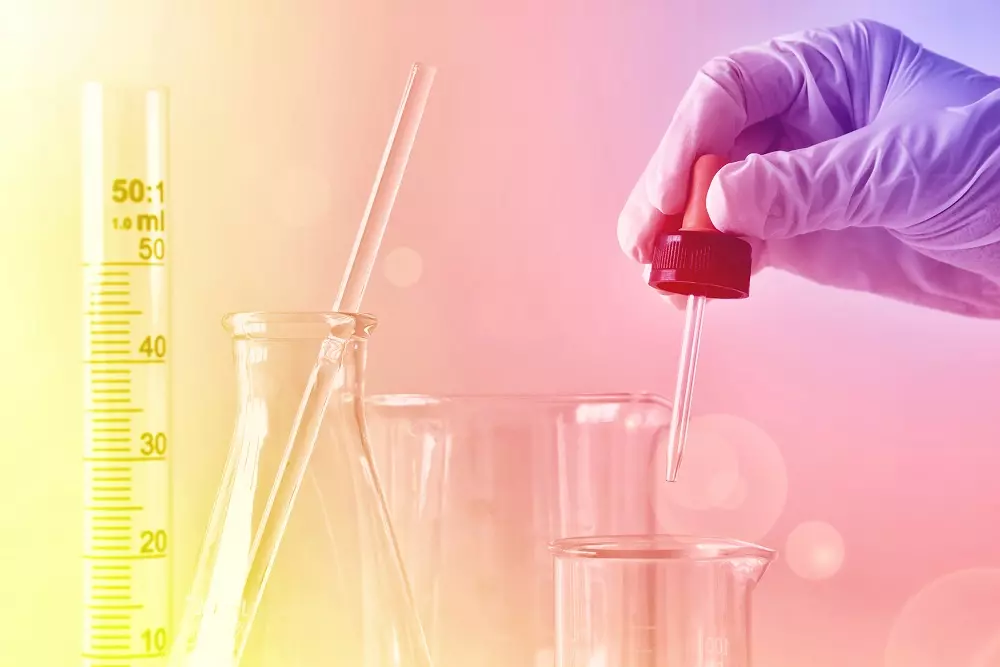[Originally published in 2016 as Dr. James Tour Tells Us How Little We Know About the Origin of Life]
A reader asked me to review an article by Dr. James Tour, as well as a video of a talk that he gave.
I was initially hesitant to do so because Dr. Tour is a giant in the field of organic chemistry. For example, he is the T. T. and W. F. Chao Professor of Chemistry at Rice University.
For those who aren’t familiar with the academic structure of universities, only the most elite professors are appointed to a position that is named in honor of someone else. This is called an “endowed professorship,” and anyone who holds such a position is in the upper echelon of academia.
He has won several awards for his outstanding research accomplishments, including being named by Thomson Reuters as one of the top ten chemists in the world in 2009. Not only is his research outstanding, but he is also an excellent teacher, having earned the George R. Brown Award for Superior Teaching at Rice University in both 2007 and 2012.
What could I possibly add to the words of someone so knowledgeable and distinguished?
After reading the article, however, I do think I have something to offer
Because of the nature of what he is trying to discuss, his article is very, very technical. There were times, quite frankly, when my eyes glazed over a bit. I didn’t listen to a lot of the video (it seems to cover the same ground as the article), but it is also quite technical.
For those who do not have the fortitude to make it through such a technical article or talk, I thought I could summarize it.
The “take home” message is straightforward: We have no idea how some of the most basic molecules necessary for life could have been produced by unguided processes. Why does Dr. Tour feel compelled to write a detailed article making a statement that, in my mind, is quite obvious? He explains:
Those who think scientists understand the issues of prebiotic chemistry are wholly misinformed. Nobody understands them. Maybe one day we will. But that day is far from today. It would be far more helpful (and hopeful) to expose students to the massive gaps in our understanding. They may find a firmer — and possibly a radically different — scientific theory.
Note that “prebiotic chemistry” refers to the chemistry that occurred on earth before life existed.
Now please note what he is not saying. He is not saying that we have no clue how unguided processes could produce the molecules necessary for life, therefore, they couldn’t have been produced that way. He is saying that we need to be honest with our students and explain the gaping holes in our knowledge so that they can investigate it further. This may lead to us finally getting a clue, or it may lead to a new paradigm in origin-of-life research.
Of course, there is a lot more to the article. He draws on his experience as a synthetic organic chemist (a chemist who designs and makes organic chemicals) to discuss the things that nature would have to do in order to produce the molecules necessary for life. He does this by discussing a series of what I consider to be his most clever inventions: nanovehicles, which are vehicles made from just a few molecules.
These vehicles can roll around on specific surfaces, just like the vehicles we ride in. The difference, of course, is that these vehicles are incredibly tiny. Why discuss the making of nanocars in an article about prebiotic chemistry? He explains:
Designing nanoncars is child’s play in comparison to the complexity involved in the synthesis of proteins, enzymes, DNA, RNA, and polysaccharides, let alone their assembly into complex functional macroscopic systems.
In other words, by giving you a feel for how hard it was for him and his team to make nanocars, you will get some idea of how incredibly hard it would be for nature to produce life.
Dr. Tour succeeds in this endeavor by simply giving you a realistic view of what it took for him and his team to make nanocars.
For example, he discusses how most of the chemical reactions in his process had byproducts that would have been harmful in subsequent reactions. Thus, purification was necessary in most of the steps. In addition, many of the chemicals that had to be made were unstable in the presence of air, light, or water. As a result, some steps had to be done in an oxygen-free environment, others in a dark environment, etc. His team, of course, could produce the needed environments and switch between them at will. Nature would have to do the same thing in order to make the molecules necessary for life.
If you want to get an idea of how complicated it all is, he gives the details on how he made one of the many chemicals that he needed (in this case, episulfide 37). It involved starting with
- a pristinely-cleaned flask,
- a chemical that had been made and purified in a previous step,
- an organic solvent (not water),
- and two simple chemicals.
Since the reaction produces heat that would destroy the process,
- the flask was soaked in a very cold bath so that it wouldn’t get too hot.
- After that, it was cooled even more.
The solution was then filtered, and the resulting liquid went through another chemical reaction that produced a solid, which was (once again) filtered. The filtered solid was then washed with alcohol and dried under vacuum.
That was how they made just one of the many chemicals needed to produce a nanocar. Temperature had to be carefully regulated throughout the process, and to make that single chemical, two separate filtering steps had to be performed. Finally, to get rid of all traces of liquid, the solid had to be dried under a vacuum.
Of course, there’s a lot more to be considered, but that gives you some idea of the complexities involved.
After he gives the excruciating details of how he and his team built their nanocars, he then explains why making the nanocars was, indeed, child’s play compared to making the molecules necessary for life. He discusses how his group made their task easier (using organic solvents instead of water, for example) and points out that nature has none of those options. He also points out how producing the molecules necessary for life requires a lot more chemistry than his “simple” nanocars.
In the end, Dr. Tour makes it very clear that we truly don’t have a clue about how unguided chemical reactions between simple chemicals could ever produce the necessary molecules for life. If you are told otherwise, you are being misinformed.







